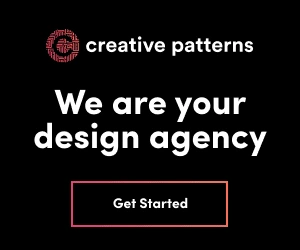Creating a logo that can be used for both digital and print media can be a challenging task, but it is important to ensure that the logo is effective and impactful across all mediums. In this article, we will discuss several key factors to consider when creating a logo that can be used for both digital and print media.
- Simplicity
One of the most important things to keep in mind when creating a logo that can be used for both digital and print media is simplicity. A simple logo is easy to recognize, easy to reproduce, and easy to read, no matter the medium it is used on. A logo that is too complex or detailed may look great on a high-resolution screen, but will be difficult to read and reproduce on print materials or smaller digital screens.
- Scalability
Another important factor to consider when creating a logo that can be used for both digital and print media is scalability. The logo should be able to be scaled up or down without losing its integrity. A scalable logo should be able to be used in a variety of sizes, from business cards to billboards, without losing its readability or impact.
- Flexibility
A logo that can be used for both digital and print media should be flexible. This means that it should be able to be used in different colors, backgrounds and with different effects. A logo that can only be used in one color or on one background will not be as versatile and may not be able to be used in all mediums.
- Versatility
A logo that can be used for both digital and print media should be versatile. This means that it should be able to be used in different contexts and mediums, such as on a website, on social media, on business cards, on brochures, and more. A logo that can only be used in one context or medium will not be as effective.
- Consistency
Finally, a logo that can be used for both digital and print media should be consistent. This means that it should look and feel the same, no matter the medium it is used on. A logo that looks different on a website than it does on a business card will be confusing and less effective.
- Simplicity
A simple logo is easier to reproduce and recognize than a complex one. Avoid using too many colors, shapes, or elements in your logo. Stick to a simple design that can be easily replicated in different sizes and formats.
- Use vector graphics
Vector graphics are scalable, which means they can be enlarged or reduced without losing quality. This makes them perfect for use in both digital and print media. Programs such as Illustrator or Inkscape are good choices for creating vector graphics.
- Choose the right colors
Choosing the right colors for your logo is crucial. Make sure your logo looks good in both color and black and white. Avoid using colors that are too similar, as they may not reproduce well in print.
- Test it out
Before finalizing your logo, test it out in different mediums to see how it looks. Print out a copy of your logo and see how it looks on paper. Also, view it on a computer screen to see how it looks in digital format.
In conclusion, creating a logo that can be used for both digital and print media requires a balance of simplicity, scalability, flexibility, versatility, and consistency. By keeping these factors in mind, designers can create effective and impactful logos across all mediums.


